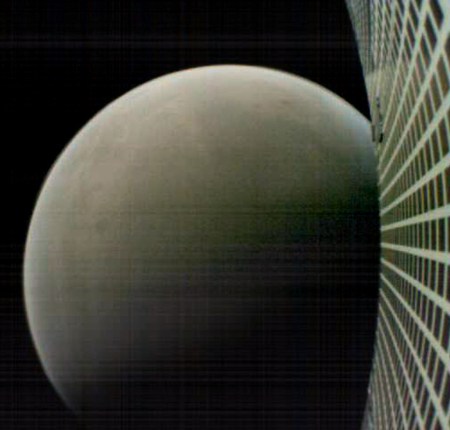A cubesat communications satellite for the Moon
Capitalism in space: The smallsat company Surrey Satellite Technology is designing a cubesat communications satellite set for launch in 2021 designed to test technology for providing communications in lunar space.
Surrey Satellite Technology Ltd (SSTL) has today announced that it is designing a low cost 35kg lunar communications satellite mission called DoT-4, targeted for a 2021 launch. DoT-4 will provide the communications relay back to Earth using the Goonhilly Deep Space Network, and will link up with a rover on the surface of the Moon. SSTL is currently in discussions with a number of parties for the lunar mission, and expects to disclose further information on mission partners and funding early in 2019.
Sarah Parker, Managing Director of SSTL, said “SSTL has led the way in pioneering the use of small satellites for over 30 years and we are now raising our sights to change the economics of space around the Moon, and beyond.”
DoT-4 will be the pre-cursor mission for a larger lunar communications satellite to follow in the 2023 timeframe which will carry a more robust payload and which will also have the potential for navigation services. SSTL’s ultimate aim is to launch a full constellation of lunar communications satellites offering full service capability to enable new and regular opportunities for science and exploration and economic development of the space environment beyond Earth’s orbit.
It appears that Surrey is trying to grab the market for providing communications services for both NASA’s Gateway project as well as the number of private small lunar rovers that are expected to launch in the coming years.
I should add that this project probably only exists because Surrey and its investors know that it will have affordable access to space, using the new smallsat rockets coming from Rocket Lab, Vector, and Virgin Orbital.
Capitalism in space: The smallsat company Surrey Satellite Technology is designing a cubesat communications satellite set for launch in 2021 designed to test technology for providing communications in lunar space.
Surrey Satellite Technology Ltd (SSTL) has today announced that it is designing a low cost 35kg lunar communications satellite mission called DoT-4, targeted for a 2021 launch. DoT-4 will provide the communications relay back to Earth using the Goonhilly Deep Space Network, and will link up with a rover on the surface of the Moon. SSTL is currently in discussions with a number of parties for the lunar mission, and expects to disclose further information on mission partners and funding early in 2019.
Sarah Parker, Managing Director of SSTL, said “SSTL has led the way in pioneering the use of small satellites for over 30 years and we are now raising our sights to change the economics of space around the Moon, and beyond.”
DoT-4 will be the pre-cursor mission for a larger lunar communications satellite to follow in the 2023 timeframe which will carry a more robust payload and which will also have the potential for navigation services. SSTL’s ultimate aim is to launch a full constellation of lunar communications satellites offering full service capability to enable new and regular opportunities for science and exploration and economic development of the space environment beyond Earth’s orbit.
It appears that Surrey is trying to grab the market for providing communications services for both NASA’s Gateway project as well as the number of private small lunar rovers that are expected to launch in the coming years.
I should add that this project probably only exists because Surrey and its investors know that it will have affordable access to space, using the new smallsat rockets coming from Rocket Lab, Vector, and Virgin Orbital.

